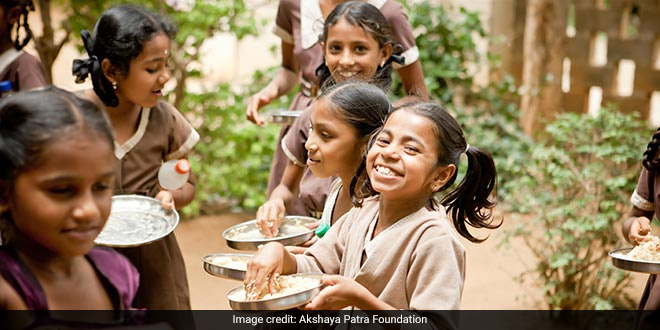POSHAN ABHIYAAN 1.0 – BACKGROUND
The Prime Minister’s Overarching Scheme for Holistic Nutrition or POSHAN Abhiyaan or National Nutrition Mission, is Government of India’s flagship programme to improve nutritional outcomes for children, pregnant women and lactating mothers. It is also called the National Nutrition Mission.
When was it launched ?
Launched in 2018
Where was it launched ?
Launched by the Prime Minister on the occasion of the International Women’s Day on 8 March, 2018 from Jhunjhunu in Rajasthan.
Targets to be achieved by
Specific targets to be achieved by 2022.
Aims
1. Stunting and wasting by 2% a year (total 6% until 2022) among children.
2. Anaemia by 3% a year (total 9%) among children, adolescent girls and pregnant women and lactating mothers.
3. The target of the mission is to bring down stunting among children in the age group 0-6 years from 38.4% to 25% by 2022.
POSHAN MAAH
Month of September 2018 was celebrated as Rashtriya POSHAN Maah. The activities in POSHAN Maah focussed on Social Behavioural Change and Communication (SBCC).
MISSION POSHAN 2.0
For effective implementation of various schemes and programmes of the Ministry of Women and Child Development, all major schemes of the Ministry have been classified under 3 umbrella schemes viz. Mission Poshan 2.0, Mission Vatsalya and Mission Shakti.
When was it launched ?
Mission Poshan 2.0 was launched by Finance Minister Nirmala Sitharaman in February 2021.
Why in the news ?
To strengthen nutritional content, delivery, outreach, and outcomes, the Government is merging the Supplementary Nutrition Programme and Poshan Abhiyan to launch Mission POSHAN 2.0.
Mission Poshan 2.0: The government will be merging the Poshan Abhiyaan and supplementary nutrition programme to launch Mission Poshan 2.0.
It will look into the ways and measures for strengthening the nutritional content, outreach, delivery, and outcomes in 112 Aspirational districts.
Significance
1. It would lead to the overall improvement in nutritional outcomes in women and children and help in creating a healthy, inclusive and sustainable environment for their holistic development.
2. Improving MMR( maternal mortality rate), NMR( neonatal mortality rate) and IMR( infant mortality rate).
3. It will address the gaps in State action for women and children that is necessary to promote gender equitable and child centred legislation, policies and programmes.
Stunting and wasting by 2% a year (total 6% until 2022) among children.



